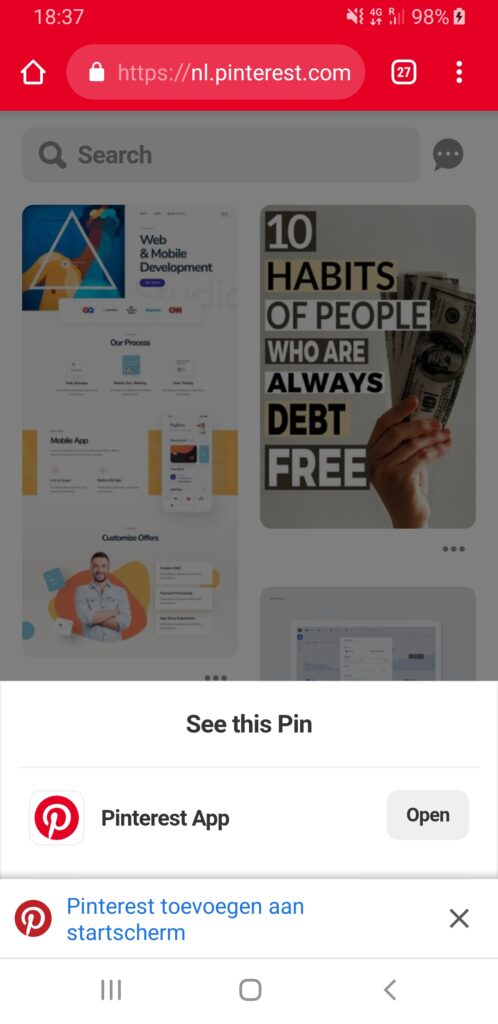Creating calm business strategies: Calm UX in practice
This article is a follow up on my previous article: How Design Can Create a Calmer World; Quieting the Digital Noise.
Until a few decades ago, objects in the world around us were mostly passive objects. Waiting for us to start interacting with them when we needed to. Or being ignored when we didn’t. With the rise of digital technology however, objects have become less shy. We are no longer in the lead of our interactions with them. Instead, digital objects start the conversation with us whenever they want, and obligate us to listen. But instead of running from them, we value the nice things they offer, the connectedness, the information, the entertainment. In doing so, we exchange our precious time for constant distractions and disruptions.

World of engaging technology
Companies around the world use our new digital objects to get our attention. The arrival of the smartphone has blurred the boundaries between us and companies, allowing them to shamelessly interrupt our lives at any moment. And as competition has grown, screaming louder and louder has become the norm. Getting people to engage with their products (over others) is what drives most companies profit. Engagement is key, and has become a primary business goal for most organizations. They want us to keep interacting, even if it’s not our own choice.
Old-fashioned business goals
Current business goals all evolve around this principle. Driven by engagement, companies value short term benefits like ‘time spent on page’, ‘session duration’ or ‘conversion rate’. If these numbers drop, persuasive tactics are employed to draw people back in. Not only does this lead to a bunch of dark and addictive design patterns, the metrics are also mostly meaningless in today’s connected world. When I’m on the train, I can easily start a shopping session on my phone and leave when my train has arrived, only to return later using my laptop to buy that cute dress. Is it bad that my buying process was longer or got interrupted? No, life just got in the way.
Maximizing engagement
Nevertheless, the examples of disruptive patterns trying to engage us are endless. The most stunning examples are those of companies forcing their apps down our throats. For example, when searching within the content of Pinterest’s website, I encountered a weird design principle. In order for me to effectively open a ‘pin’ — the main usage of Pinterest — I am obligated to download their app. For no other reason than being able to bombard me with irrelevant notifications to increase their daily active users. Because of a business paradigm they made up themselves, they end up with a product that is less accessible and thus less valuable to me, the user.

From engagement to calmness
We as designers should know better, shouldn’t we? So let’s stop digging our heads in the sand, and stop designing for outdated business goals. We have become experts in creating more accessible and convincing products, perfecting intuitive design patterns. Now, it’s time to design for customer well-being. Helping users take back control of their own time, and lives. We can make a change, and this is how:
1. Create a valuable experience
We need to challenge the current short term business perspectives that have long governed our processes. The short term benefits of creating higher engagement might offer nice figures to show to your marketing department, but it does nothing to help actual customer satisfaction. We need to stop looking for short term benefits, and start looking at the long term. It is about designing the full customer experience. So, instead of only measuring satisfaction 5 seconds after buying a product (I mean, really?), let’s check in with our customers after a few months to see how they are actually valuing our products. Or, dive into the lives of our customers to see how we can truly add value, instead of hooking them to whatever product we already have. By doing this, we can add real value to our customers’ lives, supporting long term customer relationships.
2. Introduce calm KPI’s
But, many UX designers will say: “My team needs to build things that have a measurable impact on our company’s business goals.” Fine, so let’s get rid of the out-dated KPI’s. Instead, we need to introduce new quality metrics that actually help us build something valuable. To measure real customer satisfaction, we need to stop focusing on ‘time spent in platform’ or ‘page conversion’, and introduce calm KPI’s. Are people happy after using our product? Do they feel they have achieved something valuable? And most importantly: Will they come back to our platform without being harassed by us? This last metric, which we have dubbed ‘unprompted traffic’, actually tells us far more about the value we add to our customers than most existing KPI’s. If they come back on their own time, their ‘willingness to interact’ is apparently quite high. As designers, we need to make sure these KPI’s become omni-present to help us change the way we design products for the business.
3. Design for calm practices
In order to make a change, we need to update our design practices. Instead of designing for persuasiveness (or usability, however you want to call it), we need to design for customer well-being. For creating calmness. In today’s disrupting world, we need to help our users spend their time the way they see fit. We need to stop tricking people, stop screaming at them, and stop overwhelming them with information. Stop using persuasive tactics to lure people in; instead, create a valuable product with calm interaction patterns that makes them come back. Think about the type of notifications you send, and when they are relevant. How can we inform without intruding? And last, create interaction patterns that help people make sense of the information. Disclose information step by step, and focus on the most easy to digest and relevant information first. For more on this topic, read my previous blog: How Design Can Create a Calmer World.
Next steps
If we really want to change the way technology speaks to us, we have to go back to the core of the problem. We need to fire up the discussion around ethics and the human perspective, and get involved in business strategies and business talk. In order to be able to create real user-friendly and valuable experiences, we need to challenge the status quo. I don’t have all the answers, but in order to achieve this we need to start thinking about: How can we measure calmness and long-term loyalty? Do we need to create new user research methods or frameworks? Focus our design processes on different things? And how do we convince the business of the need of more calmness?
I want to challenge you to think about these in any of your next projects so that we can take the next step. The era of persuasion has passed, let’s move on to the next era of calm design.
You can also read this blog on Medium.